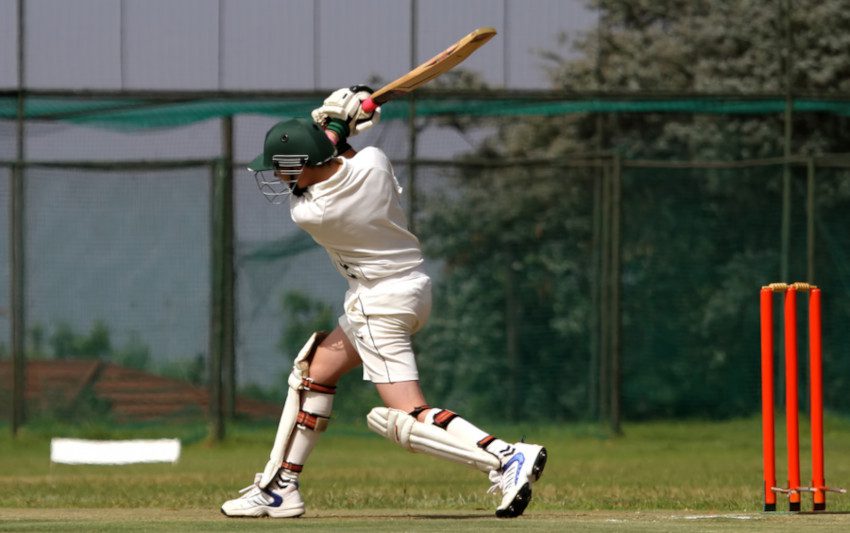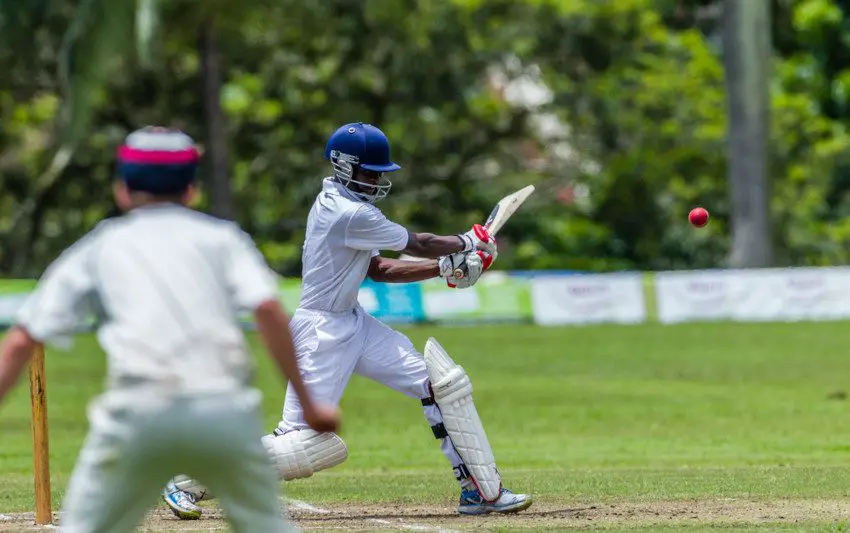Table of Contents
Within the fast bowling sphere, there are lots of different subcategories that can be applied but, whilst many cricket fans will be aware of these, what do they actually mean?
Fast Medium vs Medium Fast Bowlers: What is the Difference?
In very basic terms, a fast medium bowler is quicker than a medium fast bowler. The clue is in the order of the words – fast vs medium or medium vs fast.
A fast medium bowler is capable of quicker deliveries than their medium fast counterparts who are on the faster side of medium. This is better described in the following chart.
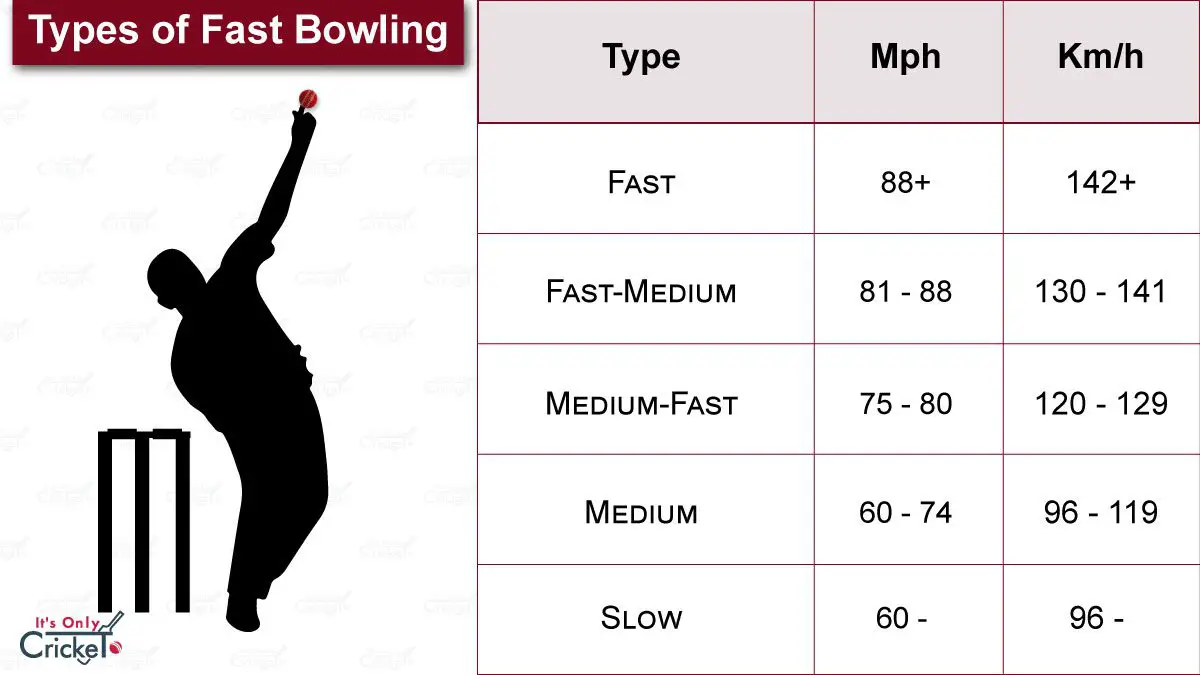
Classification of Fast Bowlers According to Speed
These can be confusing terms, but we can look at individual players and use them as examples in order to clear things up.
Also, while there are no official figures to define each of the following four categories, by bracketing them into different speed parameters, we can also make things easier to understand.
1. Fast Bowlers
These are the fastest bowlers of them all and, while there are no defined speeds for any of these categories, the quickest are capable of hitting 90 miles per hour on a regular basis.
Good examples here might include Australia’s Pat Cummins and the England duo of Jofra Archer and Mark Wood – when they are fit.
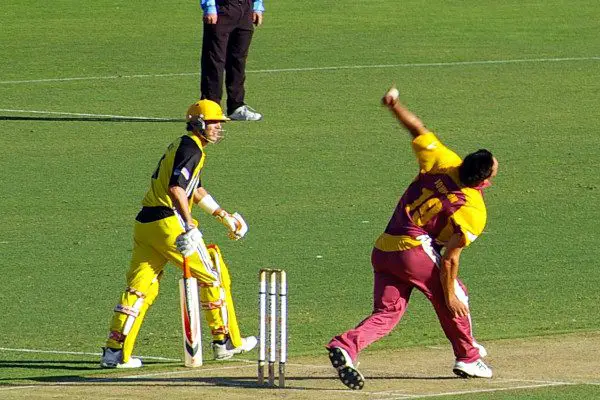
2. Fast Medium Bowlers
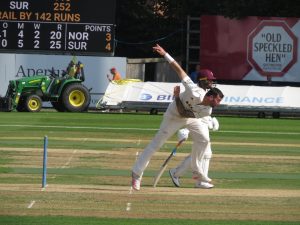
If we’re using those miles per hour categories to define a fast medium bowler, they will generally average out at between 80 and 87 mph.
Many of them will be capable of hitting 90 mph at times, but these will be rare, surprise deliveries, and you won’t see these kinds of speeds on a regular basis.
Fast medium bowlers lack the pace of the outright quicks, so they will tend to rely more on other techniques such as swing and seam.
Australia’s Glenn McGrath with his almost-perfect seam position was a great example of this while other fast medium bowlers of recent times would include England’s James Anderson and Ishant Sharma of India.
3. Medium Fast Bowlers
These guys are slower still – usually at around 70 to 79 miles an hour and they may not be regular members of a bowling attack. Medium fast bowlers might also be used more in a one day match where pace off the ball is seen as a better weapon than in test cricket.
Medium fast bowlers can still use swing and seam and they will also try to use upper body strength in order to generate some bounce off the pitch.
A good example from the recent past is England’s Paul Collingwood, while Colin de Grandhomme of New Zealand is slightly more up to date. Those who watch T20 franchise cricket from around the world may also be familiar with Benny Howell, who drops his pace right down and relies almost exclusively on variations.

4. Medium Bowlers
You may occasionally hear them referred to as ‘trundlers’, these are the slowest bowlers within this particular category. In fact, their lack of pace may mean that they are not regular members of the attack, and their deliveries will typically range between 65 and 70 miles per hour.
India’s Virat Kohli is a good example here: We rarely see him bowl, but he does occasionally bring himself on and he had nine international wickets as he went into the 2024/25 Indian season. Australia’s Ricky Ponting was a similar type of bowler. Ponting is retired and Kohli rarely bowls, so are the medium bowlers going out of the game?
What Skills Does a Fast Medium Bowler Have?
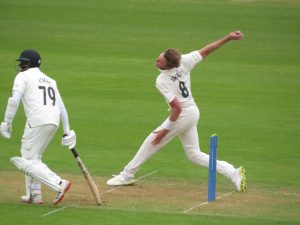
While an out-and-out fast bowler relies almost solely on their pace, those with fast medium speeds need additional skills. They will rely more on swing and seam, depending on when the conditions are in their favour.
We mentioned Jimmy Anderson and he’s a good example in this category. When he was younger, he was capable of bowling deliveries around the high 80mph mark, but those speeds dropped as he matured.
Anderson was exceptional in English conditions with that prodigious swing, and despite what some cricket fans suggest, he had a good record overseas as well.
When India toured England in 2018, I was impressed with Mohammed Shami. His swing and seam helped him to take 16 wickets in five test matches, including six in one game.
Because they lack that little bit of extra pace, the fast medium bowlers should be adept at swing or seam, otherwise, they will struggle on most surfaces.
What Deliveries Will a Medium Fast Bowler Produce?
A medium fast bowler will rely much more on variations. We mentioned Paul Collingwood a little earlier, and he’s a good example. Collingwood would bowl many cutters into the surface, taking the pace off the ball and making it difficult for the batters to time their shots.
Chris Harris of New Zealand was similar, although he was slower and could arguably be placed in the category of medium pace.
A more recent example is Benny Howell, who I mentioned earlier. Howell played in English county cricket, along with a few overseas T20 franchise tournaments. Howell had more variations than most with a range of slower balls, and change ups in pace.
Howell proved that if you are naturally a medium fast bowler, you will need to have a lot of variations in your locker. It’s all about keeping the batter thinking. If you are just bowling stock deliveries at the same pace all the time, the batting side will know what’s coming, and you will struggle.
Work on those change ups, and you will have a better chance of succeeding, even when your pace is down.
What Pace Should I Bowl At?
I remember when I started playing cricket at a very young age, everyone wanted to bowl as fast as they possibly could. We were all taking long run ups because that was the most exciting form of the game at the time.
As you grow, you consider your options. Some of us don’t have the physique for pace bowling, and remember that so many of the quicker bowlers suffer greatly through injury. We adapt to spin and slower speeds almost as a natural process.
My personal advice to any young cricketer would be to try all options. We all want to bowl pace, but maybe you are a natural turner of the ball. In time, you’ll find a natural pace, but look at all speeds and techniques while your game develops.

